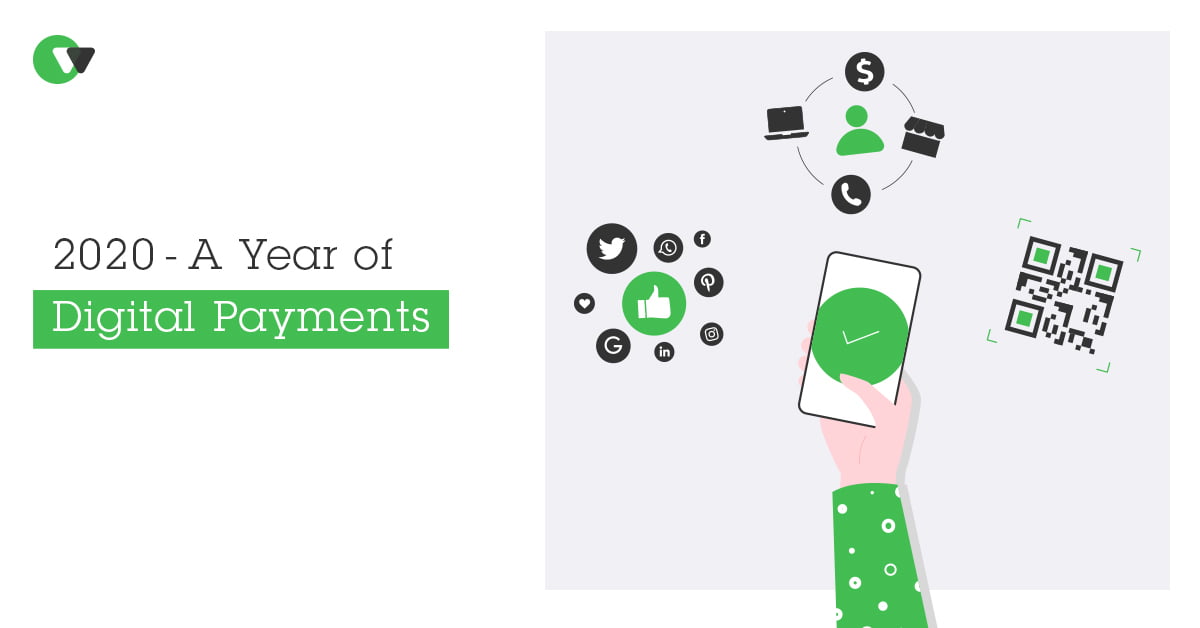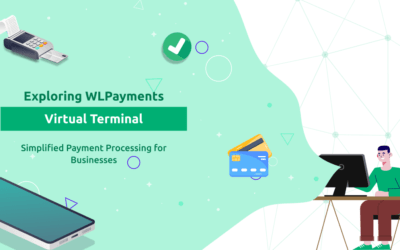
2020 – A year of digital payments
This month marked the one-year anniversary of coronavirus lockdowns in most European countries. Since then, we had to change the way we interact, work and even pay. As a payments company, the latter is a especially interesting topic for us to address. Therefore, in this blog, we will take a look at how the coronavirus impacted peoples’ payment habits and whether these changes are long-lasting. Namely, with the pandemic’s end in sight, one needs to consider which consumer preferences and payment trends are here to stay and will become part of the new normal.
Omni-channel Payments
The pandemic shifted customers from offline to online and so businesses had to expand their customer touch-points beyond the traditional face-to-face. Although it has always been the case that some customers preferred to shop in-store, some on their smartphones, while others on a laptop – the pandemic underscored these customer demands. Thus, in order to cater to all customers, businesses need to adopt an omni-channel approach to commerce, allowing customers to shop and pay the way they want.
A noteworthy trend to mention in regards to omni-channel payments is contactless payments, which are enabled through NFC technology. During the past year, the popularity of contactless payments increased substantially as naturally people avoided touching surfaces. This greatly accelerated the adoption of contactless payments with the Mastercard survey showing that 74% of people will continue using contactless after the pandemic is over. Accordingly, it is clear that this payment trend is going to stay relevant in the future.
QR Code Payments
One of the most popular payment trends enabling omni-channel commerce is QR code payments. According to Juniper Research, QR code payments will become the most used online payment method during the next 5 years, accounting for 27% of all digital commerce transactions in 2024. Moreover, the popularity of QR payments has significantly increased since the start of the pandemic – seeing an 11% boost of new users in the US. Considering how fast, easy and secure QR payments are, there is little doubt that this method will continue to remain important in the payments landscape.
Mobile Payments
Besides QR payments, one should also note that mobile payments as a whole have also increased in popularity. Prior to the pandemic, mobile commerce was already on the rise as the global smartphone penetration was increasing steadily. However, Covid-19 has certainly accelerated the adoption of mobile payments. For instance, one survey reports that mobile wallet adoption in the US jumped from 38% to 55% after the onset of the pandemic. Moreover, pay-by-link is another trend under mobile payments that has witnessed a rise in popularity. In fact from our own experience during the pandemic, we saw a significant demand and uptake of this solution by our clients.This in turn, indicates shifting customer preferences for quick and simple mobile payments. As customers find these new conveniences, we believe that mobile solutions such as digital wallets, pay-by-link and in-app payments will remain popular in the near future.
Social media payments
As most consumers spent the majority of their time at home during this past year, social media became an important source of entertainment. Thus, as the usage of social media increased, so did the opportunities for e-commerce merchants to tap-into selling on social networks. As a result, shoppers have become more comfortable shopping on social media platforms, with one Mastercard study revealing that 43% of Brits shopped more through social media in the past year. The same study also reports that efficiency and ease of purchase are the main reasons driving the adoption of social media shopping. In fact 28% of Brits state that they choose social media shopping, because they can pay “at the click of a button”. Hence, it is apparent that social media payments are an important aspect of social platform commerce and will likely remain important even after the pandemic, as the usage of social media is certainly not disappearing any time soon.
Conclusion
Clearly, 2020 has been a year full of changes,this was certainly the case for online payments as well. As discussed in this blog, we saw four new payment trends emerge as most customers transitioned to a new way of paying; omni-channel, QR Code, mobile and social media payments. Overall, the common themes seen here are convenience and simplicity, which is why we believe that these payment trends will remain popular in our post-pandemic lives. Therefore, it might be useful to consider these trends in your business’ payments strategy, as the Covid-19 pandemic has surely changed the customers’ payment habits for good.
Leave your questions
FEATURED PAGES
Unveiling the Power of Omission Reporting in Online Payment Management
Unveiling the Power of Omission Reporting in Online Payment Management
Exploring WLPayments Virtual Terminal: Simplified Payment Processing for Businesses
Exploring WLPayments Virtual Terminal: Simplified Payment Processing for Businesses Introduction In the rapidly evolving landscape of e-commerce and digital transactions, businesses of all sizes are seeking efficient and secure payment processing solutions. WLPayments...
The Future of Gaming Payment Processing
The Future of Gaming Payment Processing – How your company can adapt to it. It is a known prerogative that companies in the Gaming industry operate in an extremely competitive market, where no base can be left uncovered. Swift, hassle-free, and secure payment...

